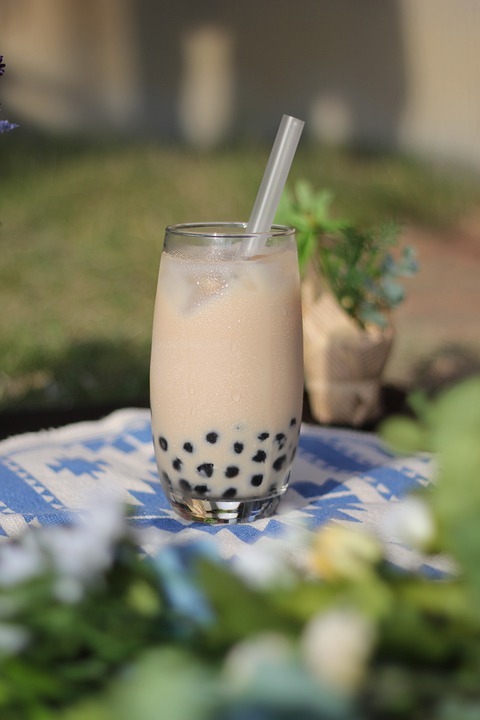Boba tea, sometimes called Bubble tea, is one of Taiwan’s most popular beverages. It is also becoming more and more popular around the world including the United States. This refreshing drink took Asia by storm, as bubble tea shops keep popping up in almost every corner of the region’s countries. From Vietnam to the Philippines, bubble tea has become a popular drink to consume during break times and hot summers.
The name “bubble tea” came from the thick and bubbly foam comes out on top of the drink after mixing the ingredients in a cocktail shaker, contrary to the popular belief that the name came from the bubble-like tapioca pearls found at the bottom of the drink.
While most people are drinking bubble tea almost every day, some of them may not know its origins. It is not entirely clear where bubble tea was invented, but the theories surrounding its creation are interesting nonetheless.
Origins
There are two theories as to who invented the boba tea. The first theory is that the first bubble tea came from the Chun Shui Tang in Taichung, Taiwan, and was co-invented by its owner, Liu Han-Chieh.
Liu Han-Chieh claims that he got the idea of serving cold tea when he saw stores in Japan selling cold coffee during his visit there in the 1980s. After experimenting on different ingredients to use in his cold brew, he then started selling the drink, and it became popular almost immediately.
However, the birth of the famous milk tea with tapioca pearls happened during one staff meeting at Chun Shui Tang. The company’s product development manager, Lin Hsiu Hui, poured some leftover tapioca pearls from her fen yuan dessert in her milk tea. Once she drank this unusual concoction, she realized that it has an excellent taste and recommended that the tea shop should sell it.
The owner agreed to this idea and started selling the milk tea with tapioca pearls, which he called “pearl milk tea,” and it became an instant hit.
The second theory of where the boba tea came from is that it was invented in 1986 by the Hanlin Tea Room in Tainan, Taiwan. The owner of the shop, Tu Tsong-he, stated that he was suddenly inspired to mix the cold tea from his shop with the white tapioca pearls that he saw at the Ya Mu Liao market.
Afterward, he tried mixing the ingredients used to make white tapioca pearls with either honey or brown sugar, which resulted in the black tapioca pearls commonly seen in popular bubble tea drinks. However, some people still prefer drinking bubble tea with white tapioca pearls, so a few tea shops still serve this type of boba tea to this day.
Types of Boba Tea
Besides the pearl milk tea, there are other variants of the boba tea to choose from. Some are served without any tapioca pearls, while a few even add cheese into the drink.
Black Bubble Tea
The black bubble tea is a type of boba tea that has no tapioca pearls. This tea is made by mixing warm black tea with ice cubes and sweet syrup inside a cocktail shaker.
After shaking it, the tea is immediately into the drinking container, thus leaving a thin layer of foam at the top as the result of shaking the ingredients.
Black Pearl Milk Tea
Not to be confused with the ordinary pearl milk tea, the black pearl milk tea is usually served with bigger tapioca pearls and a bigger straw for a much more enjoyable drinking experience, as you would have to chew on the pearls after sipping the tea.
The size of the tapioca pearls used in this drink 7mm, and it is typically popular among younger people in Asia.
Thai Boba Tea
Instead of using regular milk, the Thai Bubble Tea is made using condensed milk, which creates a much sweeter tea than the other bubble tea drinks in this list.
In Thailand, evaporated milk is also used in Thai iced tea; another very famous beverage in Southeast Asia.
Rock Salt and Cheese Bubble Tea
A popular type of bubble tea in the Philippines, the foam on top the bubble tea, is sprinkled with a little bit of rock salt and cheese, which adds extra flavor to the bland-tasting foam.
Some people often mix the rock salt and cheese foam with the tea, but some sip the foam on top first before drinking the tea at the bottom.
Genmaicha Milk Tea
This type of milk tea uses genmaicha as one of its main ingredients. Genmaicha, often called brown rice tea, is made by mixing green tea with roasted brown rice.
The genmaicha adds a popcorn-like flavor to the tea, which makes it have a very different taste compared to the usual milk tea.
Coconut Milk Tea
This milk tea substitutes the ordinary milk used in a dozen varieties of boba tea with coconut milk. The coconut milk tea has a very interesting flavor, as coconut milk doesn’t have the same taste like real milk, but it adds a certain kind of sweetness to the drink.
There are still plenty more types of boba tea to try, and some of these variants are not even found in Taiwan. The boba tea craze in Asia has led to the creation of different fascinating ways to serve the tea, and the number of varieties to choose from will continue to grow as long as a lot of people are still drinking this Taiwanese beverage.

